Rightsizing Your SMB Accounting Software – A Business Guide From “Xero is Too Small” To “Netsuite is Too Expensive” (WEBINAR)
Join superstar Marketing expert Wendy McKenzie of MYOB and SMB growth expert Leo Dreyer of Leverage Technologies in this FREE Live Webinar to talk about how you can grow your business with MYOB Advanced.
If your business is using a basic accounting package and you are facing challenges related to financial entries, multiple companies accounting, consolidated reports and advanced inventory management, watch “Rightsizing your SMB Accounting Software: A Business Guide from “Xero is too small” to “Netsuite is too expensive”
Until February 2015, businesses wanting to upgrade their Accounting software had no other options than looking at a “heavyweight” Enterprise Resource Planning platform such as SAP or Netsuite. Expensive, hard to implement, too big! Today, Australian businesses have another option…
Watch now to discover:
- The 3 growth signals you should be looking for within your organisation’s Accounting software;
- Applicable strategies to overcome the limitations of your basic Accounting package (Applies to Xero, Quickbooks and more…)
- MYOB Advanced overview – How CFOs can leverage MYOB Advanced to speed up the Financial Reporting, Inter-company Accounting and Data Analytics process
Want to learn more about MYOB Advanced and how you can grow your business with an integrated solution that is perfect for growing SMBs? Schedule a no obligation consultation here!
Webinar Transcript
Jump to section
- Intro, Agenda & Housekeeping
- Top Challenges for Growing SMBs
- About Leverage Technologies
- About MYOB & History
- MYOB in Australia
- Understanding the MYOB Family of Solutions for Australian Businesses
- Why Australian SMBs Choose The Cloud?
- MYOB Advanced And Cloud Adoption
- The Disconnected Business – What Are The Challenges?
- Thriving With A Connected Business
- MYOB Advanced Demonstration
- Have I Outgrown My Accounting Software And What Can I Do About It?
- Q&A – What’s your experience in migrating from Netsuite to MYOB Advanced?
- Q&A – Can I use MYOB Advanced for a UK registered entity?
- Q&A – Can MYOB Advanced deal with multiple legal entities?
- Q&A – Can you show some examples of Project Accounting in MYOB Advanced?
- Q&A – Can you lock periods so only accountants can open it?
- Q&A – Can I have multiple prices for the same entity say for different customers or regions?
- Q&A – Can you import data into MYOB Advanced from external sources, for example, a price list via a spreadsheet?
- Q&A – Does MYOB Advanced handle inter-company transactions?
- Conclusion
Intro, agenda and housekeeping
Leo Dreyer: Good morning everybody. Thank you very much for joining us, really appreciate your time. We know that time is precious these days. I know there’s still a few people coming in but we’ll start. We’ve got a very quick short agenda today and we’ll try not to keep you too long. My name is Leo, I’m from Leverage Technologies, currently the GM. Just a little bit of a housekeeping, if you’ve got any question, please use the Q&A box, our comment section and we will endeavor to answer all these at the back of our session today. If however we run out of time, we will definitely get back to those individuals via an offline email. I’m also joined by Wendy today, from MYOB and we’re very excited to have her with us as well.
So, a quick look at what we’ll be covering today. It’s a very quick session and the main purpose today is to highlight those areas that small businesses typically need to address as they grow or their business matures. Then, to also show you how an ERP system can address those time consuming tasks that typically an accounting package can’t deal with.
Top Challenges for Growing SMBs
On that topic, I wonder how many people in the session today can identify with any of these things that we’ve got on the screen. Typically, these types of companies running on an accounting system would have certain challenges, either functional or reporting. You either have a need for better, more accurate reporting, real time reporting even, consolidation reporting for multiple entities, you potentially have reached the limit of your accounting system purely in terms of size. Architecturally, some of these smaller accounting packages cannot manage a lot of data, hence why some of you would already be familiar with the fact that you can only keep one financial year or one entity in a specific file or database in some of the smaller platforms.
So, please hang around with us today as we’ll be touching on a few of these throughout the session. We will not only tell you about them but we will also show you in our quick demo, later on the product demonstration, how we can actually address a lot of these challenges that a lot of you face.
About Leverage Technologies
So who are we? In a nutshell, Leverage Technologies is an implementation and supporting partner with multiple ERP vendors like SAP and Sage. We’ve been doing that for around 13 years, we’ve got around 250 customers nationwide, many of which outgrew their accounting systems at some point and then leaped into the world of ERP. You’ll notice that most recently, we also became an MYOB partner. This might seem strange to a lot of people but we did this for very good reason. You see, MYOB being a trusted vendor, brought a revolutionary new cloud based ERP product to Australia. This product is called MYOB Advanced. This product is very complementary to the other products we do and already support. It is paid for on a monthly basis, it’s securely a hosted Amazon web services, it’s a true cloud product and it really fits the small and medium market in Australia superbly well.
I’m now going to hand over to Wendy from MYOB. Wendy’s role in MYOB is to work with their partners like us. Her knowledge and expertise is primarily marketing and she’s been working in the US and Europe for the past 20 years and is now settling back into this part of the world. So, I hand you over to Wendy and then after that we’ll jump into a very quick session going through a few other things.
About MYOB & history
Wendy McKenzie: Hi everybody and it’s very nice to be here with you today. The team at Leverage have asked me to deliver a few points about rightsizing that you might find interesting. I come from MYOB as you know so I have my own view on this topic but I have two main objectives. I guess from my point of view, I’d like you to know a little bit more about MYOB, how we work with Leverage and of course to learn a little bit about our cloud based solution advanced.
Because I work for MYOB, it’s quite difficult for me to make a statement about what is the right solution. So, I will be drawing on case studies that have been written that quote our customers and their views because you can tell the difference when it’s MYOB and when it’s a client. So, we’ll do that. Let me move to the next slide. Here we go.
Let me introduce MYOB now to you. You may know us from our market coverage with the very small customers and our work with accounting practices. We’re very well known in that area. However, the area that I work in is called enterprise solutions. That’s where Leverage also work with us. So, we have established since 2006, which is quite a while and we have our vision, which is, that we provide intelligent and adaptable business management software for bigger businesses that provides the insight and control required to succeed.
MYOB in ANZ
I hope by now you know a little bit more about us but you might be surprised by the amount of clients that we have. So, this is a little bit of a breaking slide but perhaps bringing some facts to the table might be helpful. So, yes, over 7,000 clients. It’s great from the point of view that the products are strong, we receive lots of customer input to keep them growing in the right direction and they are quite popular.
I know this is the type of messaging that you’d expect from a vendor but I feel like not everybody knows where MYOB is participating in the mid-market. So, we wanted to share some facts with you. We do have several solutions, let’s have a look at them now.
Understanding the MYOB family of solutions for Australian businesses
We have solutions for every business, big or small. So, if we move from the left to the right, we have accounting solutions for small business that you probably know about. Then, as the complexity increases, we have what you might either think about as financial management solutions, business management solutions and then as complexity continues to grow and there’s such needs as more of the warehousing, manufacturing environment, we have the ERP solutions, that enterprise resource planning solutions. For us on this slide that’s shown as EXO Advanced and Greentree, that’s what we have.
MYOB purchased Greentree last year, that’s where I come from and they also purchased PayGlobal a couple of years before that. Their minimum employee size for their target audience is about 5,000 employees. So, maybe not appropriate for this discussion. For today, let’s just look at our cloud solutions and just to have a look at what the industry is saying about cloud adoption.
Why the Cloud makes sense for SMBs?
Sometimes it’s quite good to share what the influencers are saying, or the experts are saying. I know that you know that the benefits of cloud have grown in awareness and the shift to cloud is accelerating. So, these are some of the numbers that we are using in our presentations to our clients because we know that we have one voice but it’s good to quote where the world is seeing cloud adoption coming and also, as it relates to an ERP solution as well. That’s what the experts are saying.
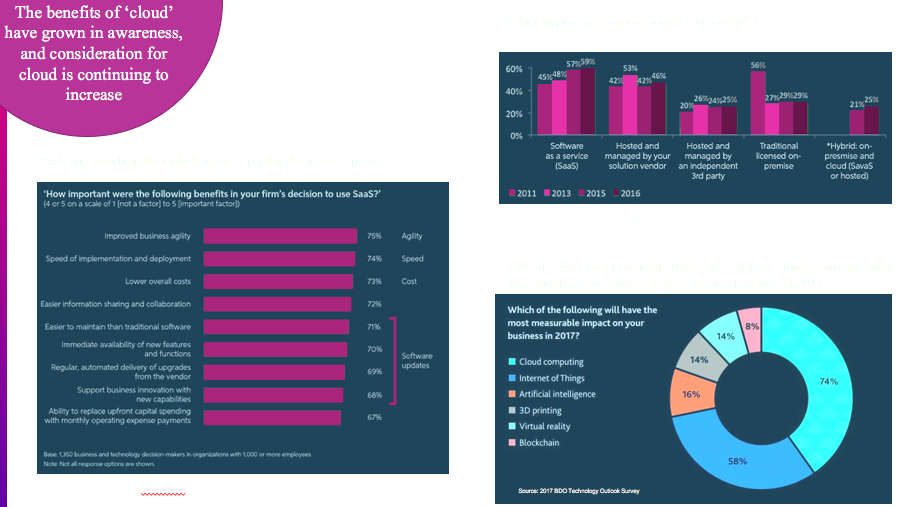
MYOB Advanced and Cloud Adoption
What about MYOB? Well, there’s a couple of proof points that I could share with you as well. On the left, we’re showing that 90% of our new SME clients immediately go online. That is up 7% from years. So we know that that’s an incredibly high acceptance rate. Also, for our advanced business sites, the acceptance is growing a lot as well. We showed this slide to the analysts at the half year point, so that was in June this year, with over 350 sites. Actually, we’ve just had a partner event in Queenstown New Zealand, where we showed that. We’ve actually got over 400 sites now and we’re quite aggressive to what we want to achieve by the end of the year. The reason that I’m sharing this with you though, these are proof points that yes, ERP cloud solutions are very acceptable in the market today.
So, where are our clients coming from? Because we’re MYOB, we have many clients moving up from their smaller solutions, companies that want to keep it in the family. So, lots of accounts, our clients moving up but we also have a lot of clients moving from other on premise solutions that are choosing a cloud strategy as well. So, definitely, this is a growth area for us.
Today’s disconnected business – what are the challenges?
Rightsizing is the topic for today. As I mentioned, our clients are coming from various places and they’re saying that Xero was too small NetSuite was too expensive. I guess I’d like to take the view of rightsizing, not just looking at too small or too big but what is the impact of working with a solution that doesn’t quite fit.
When I look through our case studies, I can see that companies see this as an issue. It’s having an impact on their ability to do what they want to do. So, many customers will come to us and describe their issue as having too many systems. Basic accounting systems weren’t really designed to accommodate a complex or rapidly expanding business. If your people are using different tools, spreadsheets, CRM, inventory management system and more, there can be some problems. We would call that a disconnected business resulting in those little topics there.
Thriving with a connected business
Our recommendation is that to handle the workload, you need a more sophisticated solution that offers a centralized, integrated information database. We call that the connected or integrated system. So, one of the benefits of rightsizing would be this integrated system. I just want to tell you a little bit about a client that we have in Queensland, not Queenstown, Queensland, who, I’m just quoting from a case study, who experienced huge growth. They initially imported health supplements and then they began manufacturing them as well. They were using Xero with another system to manage their inventory.
The best thing is, let me quote from the case study, “The two were meant to work together but we had issue after issue,” said Toni, and she’s a director there. “Some actions it would replicate three to four times over and we could never control the inventory correctly. We could look from their through to Xero but never the other way. So, we had to look at things like credits in both to get an accurate picture of what was going on. It was an absolute nightmare and so we missed out in our own manufacturing, the nightmare increased,” she said.
So, this case study also talks about having this problem, creating cashflow problems as well. So, she didn’t trust the financial data. Unfortunately, the creditors were complaining about money that she didn’t even know was owed. So, they came to us needing more functionality because of their growth but also a proven integrated system. This is what she says, “I really enjoy the way accounts warehousing and production all integrate with each other,” she says, “it just all makes sense. We keep coming up with ways to tweak our process just to make ourselves more efficient.” So, that’s what Toni is saying. You can read that case study that’s up on our website, you look in the bigger business area, case studies and the company’s called ATP Science. I just feel like sometimes I want to tell you from the point of view of our client experience of moving from their other environment to MYOB. So, you find lots of case studies there to look at.
For today, I know that Leo is going to show you through Advanced but let me just introduce you to it. We’ve got a cloud based business management software designed for Australian and New Zealand requirements, highly secure and scalable. I just wanted to share a little bit. These are the modules from Advanced as well. If you can see, all of the different areas of the business are covered in this integrated fashion. That introduces MYOB Advanced to you but I know Leo now is going to tell you his experience and show you a little bit about it as well. So, I’ll hand it back to you Leo.
MYOB Advanced Demo
Wendy, thank you very much. I hope everybody can still hear us okay. Just to quickly let you guys know, we’ll be doing the draw at the end for the business transformation workshop for one of the attendees. If there’s any questions, please pop them in the Q&A box or drop us a comment in the chat. We will definitely get back to you at the end of the session with all those questions. So, thank you Wendy for that.
I’m going to just now go over and share my screen. Hopefully you guys can all see my screen. I’m currently logged onto a web browser. It’s probably the first thing you’ll notice. So with MYOB Advanced, being a cloud based product, you’ll notice that all you need to have this working is an internet connection, which makes it absolutely fantastic. There’s no need to implement, install any software, do any upgrades, you can run on a Mac like I’m running on this session, on any web browser. It’s not dependent on any specific hardware. So, it just makes it very, very easy and it really gives smaller businesses the mobility that they desire.
The second thing you’ll notice is that the user interface gives you a graphical dashboard. It’s a per user dashboard, which means you can customize and set these things up specifically to fit specific user roles. As an example, if I was maybe somebody that was dealing with inventory on a daily basis and I had to deal with shipping, et cetera, and I’m a warehouse procurement person, then maybe this dashboard’s a little bit more what I require. They talk about embedded BI, which means that where the person’s working is the information that they need. From here, they can literally just click in and go into the actual order or view KPIs based on coloring schemes as to where they’re falling behind. They’re quite easy to manage and change. As an example, you can set up different parameters in different colors. If I were to for instance change this to my normal level being 40, you’ll see that then that would become a green KPI because I’m not over 40 yet. So, quite easy to customize the basic ones you get with the system.
If I just go back to my main dashboard, you’ll see I’ve got various different things on here. These dashboards and reports are all live. That means it’s real time and it’s taking into consideration my GL stock, anything else you might need to look at in your business. So, it is truly the connected business, a lot of the issues, a lot of the smaller companies struggle with.
The other thing you’ll notice here is I have a little favorites menu bar. Underneath each of these menus is my core modules. Now, MYOB Advanced is not a per modular price. This is a very important point because it makes it a lot more accessible for the small guy that’s only got three users. They only pay for the users that they use and not for all the different modules that they don’t need. So, it makes it very cost effective. As an example, if I were somebody that had to do general transactions all the time, I could potentially just flag and add this to my favorites menu. You’ll see I now have general transactions on the side.
So, you truly can customize the system to just show the person what they need to see with a quick menu option as well. It’s also quite easy to find anything you’re looking for. So as an example, if under the finance module I’m in the GL section, and I want to look for anything to do with journal, you’ll see that by just typing a few letters, the system brings up any menu options with regards to journals. If I were to type the full name out and then hit my help, the system does a quick google on that type search. So, the google search will bring up anything to do with journals in my system. It’s actually also one of those systems that actually has a “useful” help form. At the moment, I’m just connected to our demo environment at Amazon Web services.
So, I’m back up and I’m literally just going to move forward now. What I will do, is I’ll touch on this demo very much around finance, I’ll talk through a lot of these modules that you can see here and I’ll also touch on the distribution. I know we’ve got people in the room, we have potential NFPs, or people that are doing warehouse and distribution and manufacturing, there’s a bit of everybody on this session, so I’ll try and keep it quite high level. If there’s any specific questions, then please pop those in the remarks for us.
The first thing I want to talk about, what you guys probably see is, I’ve got the journal screen open here at the moment. Now, one of the key things to note is that, I can handle multiple entities, we call them branches, inside one database. Here, you can see I’ve got company A, B, C, D, they’re all separate ABNs. I can keep them all in the same system and I can even do journals through to the intercompany if I wanted to. We also have multiple ledgers. This means potentially different bulk budget ledgers, a reporting ledger in maybe a different currency and it could just mean a statistical ledger. We’ve also got statistical ledgers.
So, with regards to currency, we can process in multiple different currencies as well. You can set up any other ones, the system can then pull the conversion rates for you and it can automatically do the translation back into AUD. For the purpose of this journal, I’ll stick to an AUD journal. You’ll also see here that we can set up auto-reversing journals and there’s a whole bunch of different features here. The other thing I want to point out, there’s all these little red asterisk fields, it would be my mandatory fields. Now, an ERP product like this would promote workflow and ensure that validation takes place so that people don’t enter data the wrong way and to make sure things are great. Now, I’ll actually show you a little bit how that works in just a second.
Let’s say I’m putting in a journal, my posting period here, quite important before I move on, is set to a specific period. Why is that important? In this system, you can keep multiple financial years open, not like smaller accounting systems where you can’t do that. So, the date becomes very important, the transaction dates part. So, what I will do is, I will move on and just process a quick journal. In the account field, allow me to look for the accounts. I’ve got two options to find that. I can either hit the magnifying glass on the side, it’ll bring up a whole host of accounts for me or I can just start typing. Now, I know for instance I’m going to try and do an income journal, I can just start typing a few letters and the system will do a quick search for me. So, very quick and easy to find data.
You’ll see here, INC is either what’s in the name or what has actually the start of the name. In this case, I’ll just pick income sales or if I knew the account, I could also just type that in as well. Once I’ve selected the account, I’m now in this next section. Now, sub-account is a very important part. A lot of the people in here needs to run a profit and loss by revenue stream or they need to do grant management and account for money that’s come in and it’s gone out, whether that’s even maybe just a mini little project or an event. We have got customers using sub-accounts for tracks even, where they want to maintain all costs and all revenue for a specific product say to an asset.
So, this really is either a profit or a cost center or a mix of both. As an example here, I’ve got revenue 1 set up as my 001 and apartment one is a cost center’s 01, just to give you a very simple example. But you can obviously set up as many of these hierarchies as you want. That gives us the ability to keep the chart of accounts very small, so that doesn’t become a tedious task. You can then run profit and loss reports across various of these. I’ll touch on that in just a second. For the purpose of the demo, I’ll just select my default sub-account.
The next thing is to obviously just put in a credit amount, and I’ve got project accounting switched on the system. I won’t touch anything on this database, on this demo. We do have a fully featured project accounting suite as well that ships as part of MYOB Advanced and I’ll touch on that a little bit later. On this screen, you can also drag any other fields around to fit the user. So, it is actually quite, quite easy to do. You’ll see that at this point, if I were to hit save, the system pops up a little error here. Now, this is what I call a very good error. ERP systems would provide like I said, workflow and validation. It tells you that you can’t create this journal being a one ledger journal. Other than popular belief, you can’t actually process that.
So, you’ll see here that the batch is actually out of balance and that I need to review it. So, when I add the second line, and in this case, I’ll just look for a foreign data account, accounts receivable foreign, and I will just process the other side. As soon as I hit save now, I get a green line with no error, which means, now all validations in the system’s done. That means mandatory fields are filled out, et cetera, et cetera, et cetera.
When I now hit release, this is when I’m actually processing this journal into the system. Now, what ERP systems do over and above smaller accounting packages as well is that, it promotes general accounting practice and best practice at that, which means I can’t now afterwards go and edit this journal. There’s no way to go and change something that’s been posted to the ledger unless it’s with another document. So if for example, JL6945 had to be reversed for whatever reason, we made a mistake, we’ll have to go to actions and then go to reverse batch as an example. So, in this case, debits and credits are swapped around and now I’m reversing the journal that was done before and you can see here it’s tagged as a reversing entry and I’ve got a hyperlink here back to my original journal. So, if I hit that, well see, it’ll open the original journal that was created 6945 and there’s the debit and the credit. So, very quick and easy.
It’s also got a full order trial for order team purposes. Talking of order team purposes, what I would like to show as an example, we’ve also got a fully fledged document management system within MYOB Advanced. So, if I had to attach a PDF or a reason why I’m reversing this journal, potentially, this could be on a shipping note, you want to have maybe proof of delivery or on a journal you might want to put an email or just some backup as to what’s going on. In this case, it’s a picture but I’m just going to drag it onto the screen. You’ll see that now, this new journal 6946 has got a file attached to it. Now, this file sits in the database and will forever be part of this journal 6945. By opening up the tab, it will actually open up there and you’ll see it’s pulled it all the way from Amazon web services from the database.
You can keep certain of those things in sync and we’ll talk about that also a little bit later. So that’s just to give you a very quick overview of doing a very basic journal. I know my journals don’t make sense because I’m not an accountant. So please don’t crucify me if that wasn’t the right way to do a journal. I thought I’d just show you a little bit around the look and the feel.
We’ve also got notes, activities and notifications. Now, an ERP package typically would also give you the ability to do what’s called proactive alerts. You might want to set up notifications when gross margins are not fulfilled, the minimum gross margins on the sales order or if a journal gets granted to a certain GL account, you want to be notified about it. This allows you to start running your business proactively by alert management as opposed to running it reactively on a P&L only 15 days into the next month. This is a key, key example and this is what we would use the notifications for. The activities is where the CRM comes in. This package has a fully fledged CRM system as well, which I won’t have time to touch on this demo but this is where you would do that. You could also add a whole essay here of the explanation to the document.
So I’m just going to go ahead and release and just put that in. We’ve also got six questions that’s popped up through the box. Thanks everybody for that. We’ll definitely address those when we get to the end so please stick around. We have to take note of that. If there’s any other questions, please, please make sure you put that forward to us.
So, a little bit just around maybe some GL reporting. We keep talking about ERP systems gives you great reporting insight into your business. Let’s have a look a little bit at what that means. So, I’m going to run a GL report here, just a standard P&L. Now, because I’ve got multiple entities here, I can actually select a range of branches, select different revenue or cost centers here. For now, I’ll set up a template here that just preselects all those parameters for me. I can then also schedule these templates. This means I can send one of these reports privately to certain individuals or management on a certain day in a month. For now, I’m going to run it manually, so I’m just going to his, run report.
You’ll see, I’m presented with a detailed P&L version here at the moment for company B. At the moment, it is across all my companies. So, I can now open a little filter here, where I can actually from here just filter by cost department, revenue stream, different company and get a different view of that exact same P&L. I’ve now just hit company C and as you can see, they’re not doing very well. If I needed to try go and understand what’s behind the transactions as well, we’ve got the ability to drill into the detail from these reports. This is something that a lot of the smaller packages can’t do or a lot of this is done in Excel. So, by hitting that little hyperlink, I’ve now seen that there’s a specific posting in a certain period. If I hit that hyperlink again, I go into the next stage. I can see here, there was two different journals that was actually posted to that GL account hence there being that value of 912.
Over and above this, we’ve also got the ability to do things like running a P&L across all my different companies but present the columns differently. I want to maybe have company A, B, C, D all as separate columns but then have my consolidated view as you can see here on the side. So, this is something that we can do either through revenue streams, cost centers, grants, whatever is relevant to your business. It really helps to get a quick consolidated view for those of you that’s also got multiple entities in the room.
Now, I won’t have time to talk about too many of these things but please take note that under the finance module, we’ve got a fully fledged accounts payable, accounts receivable, fixed assets, we even cater for deferred revenue, which is becoming more and more often a common thing for most companies. They either prepay a lot of costs and they want to defer that to a balance sheet, it could also just be revenue. I’m just going to quickly show you how to do a tax report. So, this will be a very quick balance report for a specific branch. I’m now running this for a specific period and you can see here, I’ve put all my different tax codes with all the different values and from here I can print over balance report as you would expect from someone like MYOB, which is already in the right format to just submit to the ATO. So, you can straight away see there, it’s literally all filled out for you.
I’m going to now jump back into distribution, because we do have a few people on this session that’s specifically here that’s catering for stock. So, I’m going to try and just quickly cover off at a very high level a little about the advanced inventory management that we do have. What I will do is, I will look for a mouse pad, which is a little specific item I’ve set up for this demo. It forms part of my peripheral group of items. Behind every item group or item class there’s a whole set of predetermined GL accounts and how we do the costing. You will see here proper systems. What I mean by proper is, ERP packages should be able to give you standard, average and FIFO and even cost by batch, which is what this specific is, so that you can actually start tracking costing in different values and even for different groups of products. We can cater for a lot of serial classes. This is maybe batch numbers with expiry dates.
We’ve got fully fledged BIN locations in here, we’ve got multiple units of measure with conversion rates, which mean you can do a stock take or sell this product in a box and untangle it. We’ve got color style matrix as part of the product, which is called sub-items I won’t cover that now. Under here, we’ve also got little quick information on map costing, so I can see the last cost, my current average cost because these units set up as an average cost, I can see my minimum cost and my maximum cost and also my recommended retail price.
There’s a whole host of attributes we can set up as part of the product as well. We can embed a little picture, we can potentially say this is made of aluminum or steel and have that as a filter and then maybe that’s something we’ll want to run additional reports on. The system also caters for multiple warehouses. This is very crucial. So, we’ve got a lot of the small guys outgrowing their accounting packages. When they look for advanced inventory management, they start to have multiple locations and they need to start seeing consolidated stock. Now in this system, because of the multiple entities, I can even see stock across all my different entities as well, which is a crucial thing to be able to do. I can obviously carry packaging materials. Cross references in this case would purely just mean what is my vendor part number or my barcode for this specific product, et cetera, et cetera. Because this is also a web based system, you’ll see that I can actually embed YouTube videos right into the product. This is something that’s very useful.
If let’s say you’ve uploaded some of your personal material of how the specific product needs to be installed or set up or even training material, because all of those videos can be embedded straight back into any of these screens. That’s a little bit about it, just at a very quick glance, what we can do on stock or what’s entailed in stock. I’m going to process a quick sales order, and then just show you, we’ve got a little bit of electronic workflow in the system as well. That means that we can do approvals based on certain criteria not being met.
I’m in the sales order screen at the moment, which is one of my favorite options. I’m going to start looking for a customer. In this case, I’m going to just start typing a few letters again. You’ll see there, when I just do AB, I get a few different options, when I do ABC, I only get ABC studios, which is the one I’ll use for this reference. Now, every customer file has got a fully fledged customer master behind it as you would expect. But, we can carry multiple delivery addresses, multiple contact people, we can set up payment terms, we can manage different currencies.
You’ll see here at the moment, I’ve got balance of 4,800 on this customized account and I’ve actually got an open sales order to the value of that, which means they all, their credit limits, they’ve only actually got $365 left as an example. So, we can manage all those things. It’s all set behind it. I’m really rushing through this to just make sure I don’t waste your time today so, I’ll get back to that again a little bit later offline for those who need to see a bit more and I can obviously sell this in different currencies as well.
I am just going to go ahead and just add a product to my sales order. I’m going to now find my mouse pad by just typing in mouse. In this case, you’ll see here there’s a little notification that’s come up that says, “Gross minimum requirement is not satisfied.” This is the alert I spoke about. So, if I’m selling this for 109, you just sold these things costing as $1.20, which means there’s problem. The person won’t be able to go in, maybe they should go for electronic approval or at least just send me an alert so that we can fix this for the next order.
On the same token, if I was to sell 1,000 of those, you’ll see now that my order will become $1,000 and you can see here that my customer now has got an alert, because now, the customer’s credit limit has been exceeded. You all saw that they only had 365 left. So, this is a fantastic way to manage the business before problems happen. To just give you a quick example here, I’m going to just go through a previous sales order that’s been created. I want to just show you, if you maybe have multiple lines on a sales order as well, in this case, I’ve got 10 that was ordered and I now want to go and have a look, how many of these have been shipped or invoiced. The system gives you all the links. So, I can see I had one line with 10 but then one product was shipped on that day, which has already been invoiced and there’s the hyperlink to the actual delivery note and the invoice. So, all integrated, all in one system and everybody can see what’s going on.
We’ve covered a lot in a very quick space of time. What I did want us to just talk about and I’ll probably just talk about it, we can cover it later, it’s just around purchase order approvals, which I’ve run out of time for today. But just to show you at a quick glance, we’ve got, it’s 20 minutes to 11:00, we said it was going to be 45 minutes. I want to leave time for the Q&A, so you’ll see at the top here, we’ve got the CRM, the finance distribution, payroll, these are all the core modules that ship for the product.
Signs that you might be outgrowing your Accounting Software and what to do about it
Guys, just to quickly cover off, what we’ve discussed is, you might be dealing with any of these problems we’ve highlighted in the beginning. Whether that being you need better reporting, your business has become a bit more complex to manage, you’re doing things a little bit manual. The question is, what can you do about this?
Typically, you’ve got a few options. Like we discussed earlier, is you can obviously stick to using potentially what you use, have a lot of integrations or plugins or add-ons into that dual reporting in spreadsheets, which could be very time consuming or if you potentially have to look at a product like some of the accounting packages like Xero, but you would always at some point outgrow those packages when it comes volume, not all, not everybody but certain individuals might have that requirement because it can’t cater for different complexities or bigger volume. The only other option you had was to upgrade to an ERP system. So, typically you had to look at something like SAP or NetSuite.
Now, reason why I’m bringing both of those up is, NetSuite being a cloud based product but it’s a modular price. At that modular price, it also comes at a certain cost. So, things have changed MYOB has brought a revolutionary product to the table, which is on par with some of those products I’ve mentioned but the pricing is smack bang in the middle between Xero and NetSuite, which kind of talks about the fact that you’re getting a lot of value for your money and you’re partnering with a vendor that’s been in Australia and New Zealand for the last 25 years and really focusing on this market and not global.
Q&A – What’s your experience in migrating from Netsuite to MYOB Advanced?
The first question we had was from Richard, what’s your experience in migrating from NetSuite to MYOB Advanced? We’ve had two previous customers that’s come from NetSuite to MYOB Advanced for reasons I won’t mention in this session. There isn’t, data migration is fairly straight forward. There is no plug and play button, if that makes sense. It had to be exported back to Excel into different templates and then uploaded back to us, but we’ve got templates now for almost any system that people come from, whether it’s a beta product like NetSuite. So hopefully that answers that question.
Q&A – Can I use MYOB Advanced for a UK registered entity?
The next one is from Solomon, can I use MYOB Advanced for a UK registered entity? Indeed, you can. So MYOB Advanced primarily and predominantly sells in ANZ. The product, the core product that it runs on is actually a US based product, so you can run it in America. Any english territory, it doesn’t have language perks, that’s why it’s more difficult to roll this out into any country that’s got different language requirements. But because the legal requirements and the general accounting practice is also very similar, we partner with a few partners up there to just hep you with the text and the legislative part of things. Yeah, you can actually do run it for a UK entity.
Q&A – Can MYOB Advanced deal with multiple legal entities?
The next one I’ve got here is just from anonymous, can this deal with multiple legal entities? We’ve got 20-30 companies. I don’t need to consolidate them. I just need to be able to switch between them more easy. Yep, you can definitely do that. So MYOB Advanced, if you want to keep them all in separate databases, you can. You can set them up as separate branches. They don’t then have to consolidate. So, in my demo earlier, I showed that there is consolidation ability but you can run them all separately anyway. You can run balance sheets, P&L for all of those companies individually. That way, you don’t actually have to switch into the different companies. In some instance, you do have to set up a separate database though when there’s a different currency involved and things like that. So, those are things we can touch on later on as well if required.
Q&A – Can you show some examples of Project Accounting in MYOB Advanced?
The next one I’ve got here is just, can you show some examples of Project Accounting? Unfortunately, I won’t have time today Nate but what we’ll do is, we’ll be in touch and if you want, I’ll do just a separate session for you specifically on project accounting. In a nutshell, what project accounting is in the system, is it’s primarily focused for professional services industry, where people need to be able to run a P&L by project, being able to do different budgets with variations on it, but yeah, we can cover it all in a separate session.
Q&A – Can you lock periods so only accountants can open it?
Okay, the next question was from Angela. Can you lock periods so only accountants can open it? Yeah, it’s a great question. You can lock periods, you can set also only certain modules to open at different stages. The other thing you can do is, the system ships with an accounting license, which I forgot to mention earlier. That just means that there’s a free license to use for your accounts. You don’t have to buy them a separate license. There’s also read only licenses for your executive or C level team. Some of them might want to only see reports and view data. There’s also a cheaper license out there for that.
Q&A – Can I have multiple prices for the same entity say for different customers or regions?
Another question I have here is, can I have multiple prices for the same entity say for different customers or regions? Yes you can. The system is designed where you’ve got different worksheets. The worksheets is based on either the customer, the product range or there’s a whole host of different hierarchies that we can set up behind that. If it’s in the same entity but you’ve got different customers, then you can set up special prices by customer or special prices by product stream and depending on which one is the lowest price, potentially you can come through to the system, all those settings we can set up. So yeah, we can actually do that.
Q&A – Can you import data from external sources, for example, a price list via a spreadsheet?
Another question I’ve got here is just, can you import data from external sources, for example, a price list via a spreadsheet? Absolutely. It’s something I didn’t have time in the demo to show you but we’ve got an import scenario, which can automate a lot of that stuff. So, if you’ve got a template or even something that’s a purchase order in a certain layout, we can go and fetch that data chronologically at certain intervals, pull that in and actually go create a PO for you, in your case a price list. Yeah, you can absolutely suck the data in. Like I said, you can even schedule and automate that.
Q&A – Does MYOB Advanced handle inter-company transactions?
Another one here is, does it handle intercompany transactions? It does. I also didn’t have time to talk about that. It handles certain types of intercompany transactions. So, intercompany is quite a, there’s a lot of different aspects to it like back to back sales orders, purchase orders, there’s other intercompany transactions like cost allocation splitting. We do some of those and some of them it’s a little bit more and more tricky. That’s something we can definitely take offline and maybe talk around that.
Conclusion
All right, so guys, I think that kind of concludes the session. Thank you very much for your time today. I really appreciate it. I know time is valuable these days and we will definitely be in touch after. Thank you Wendy for your time today and hopefully we’ll see you guys soon.


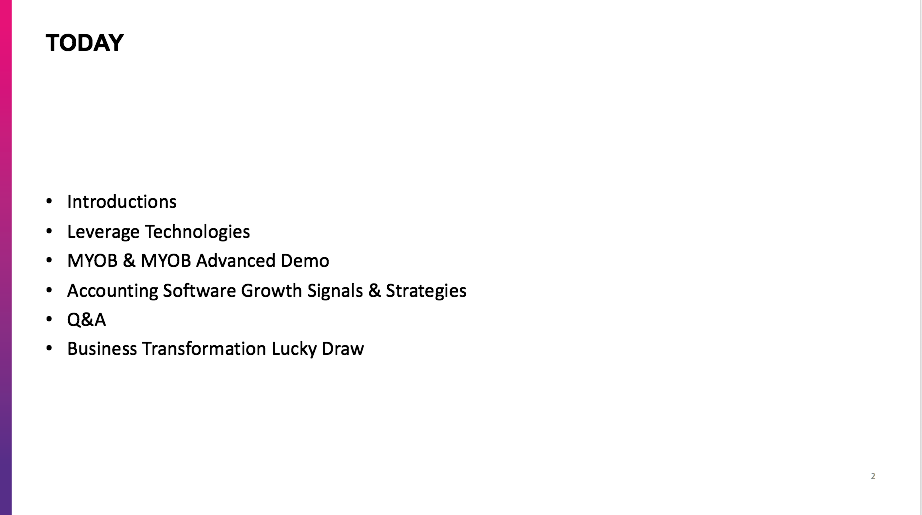
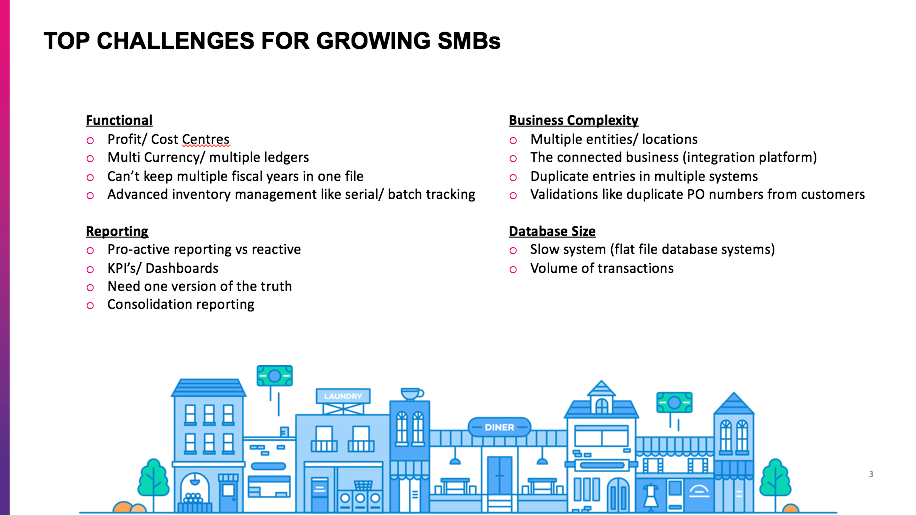
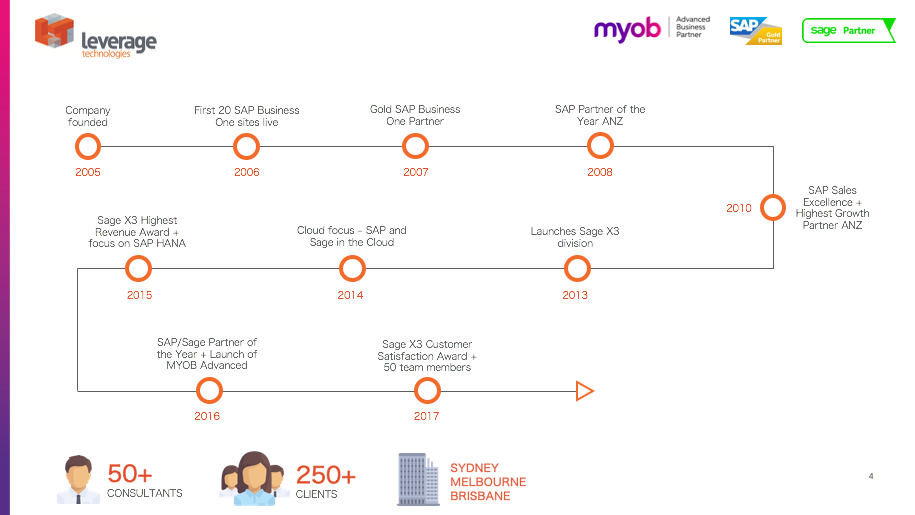
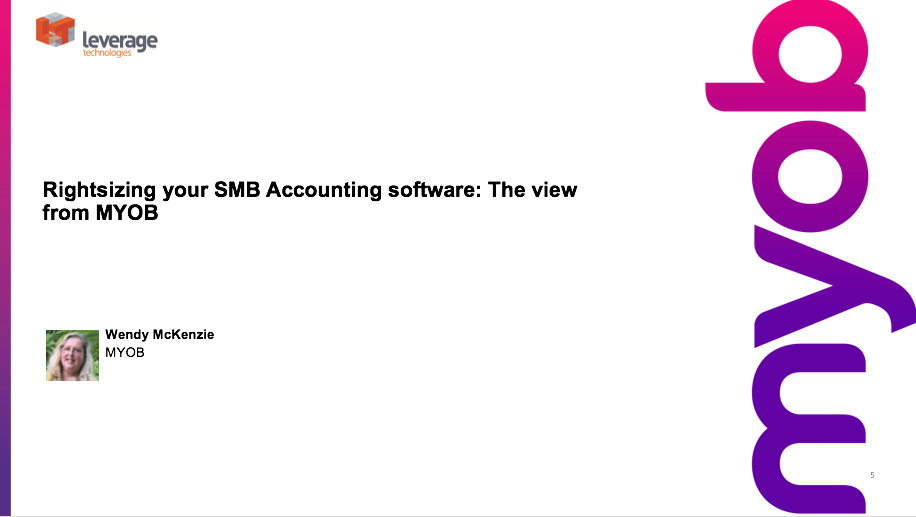
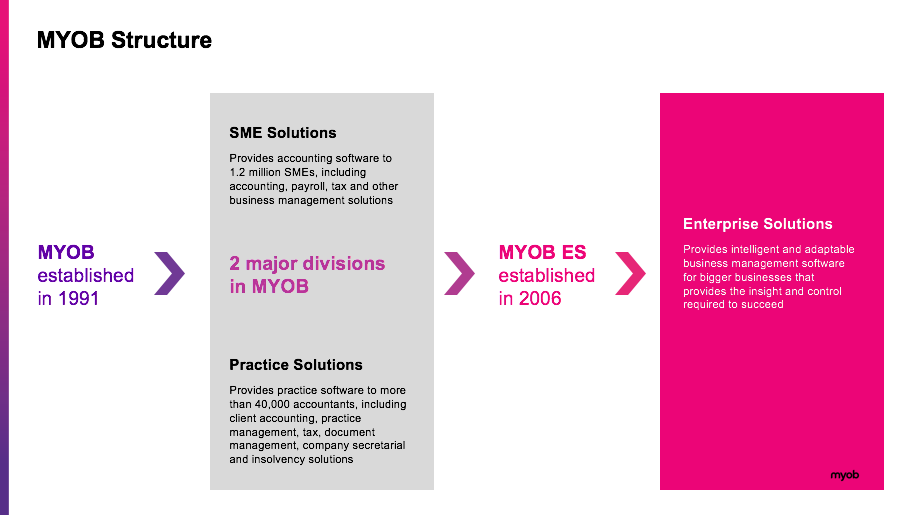
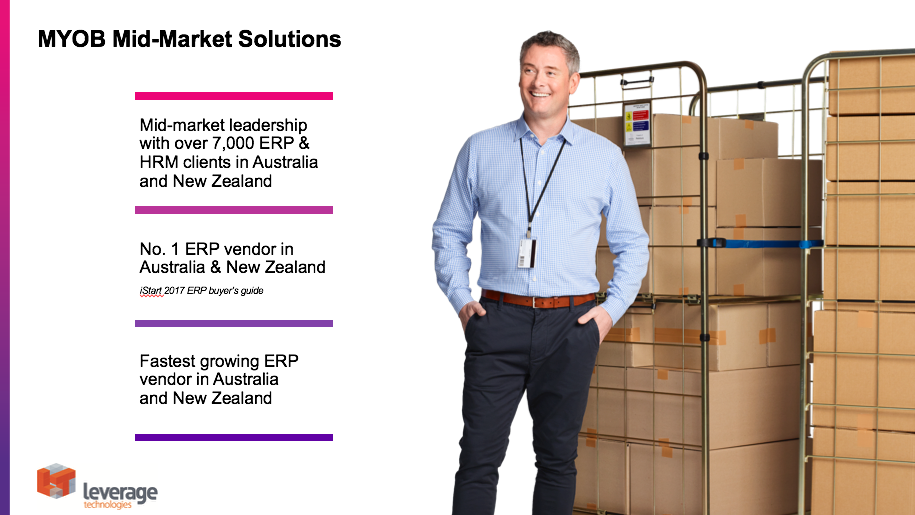
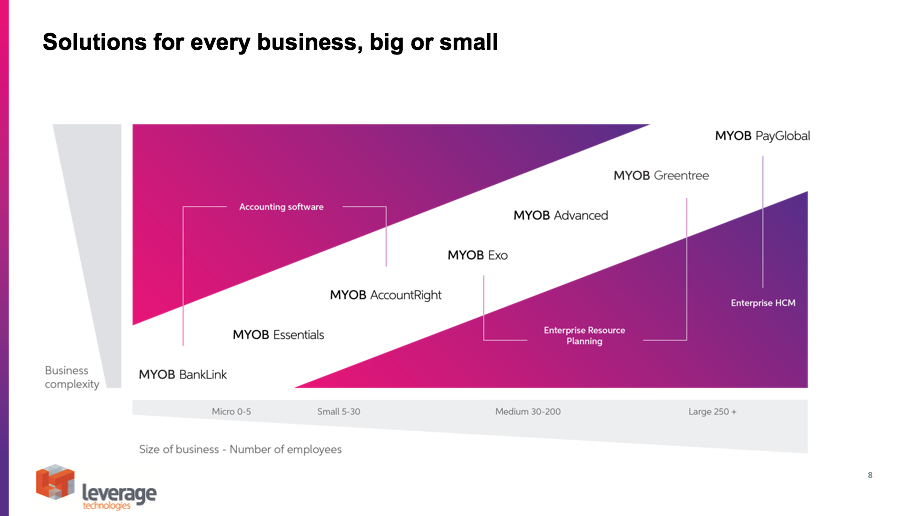
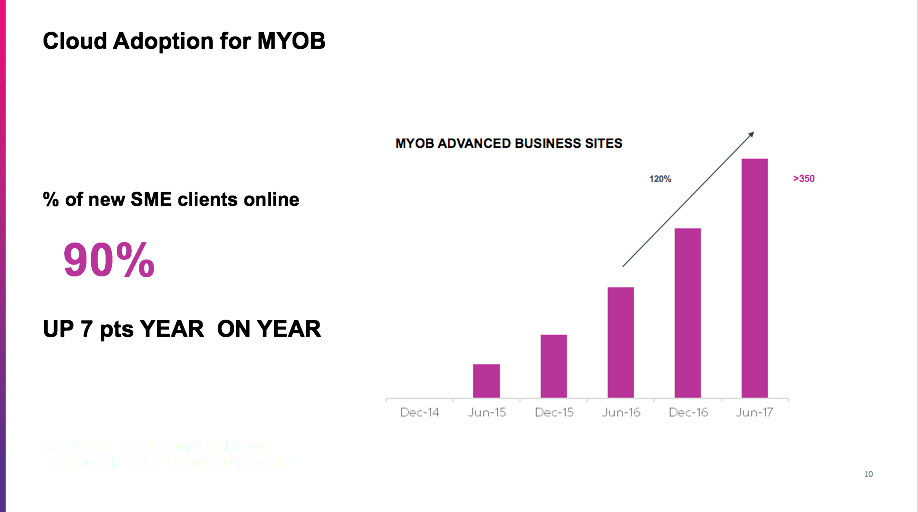
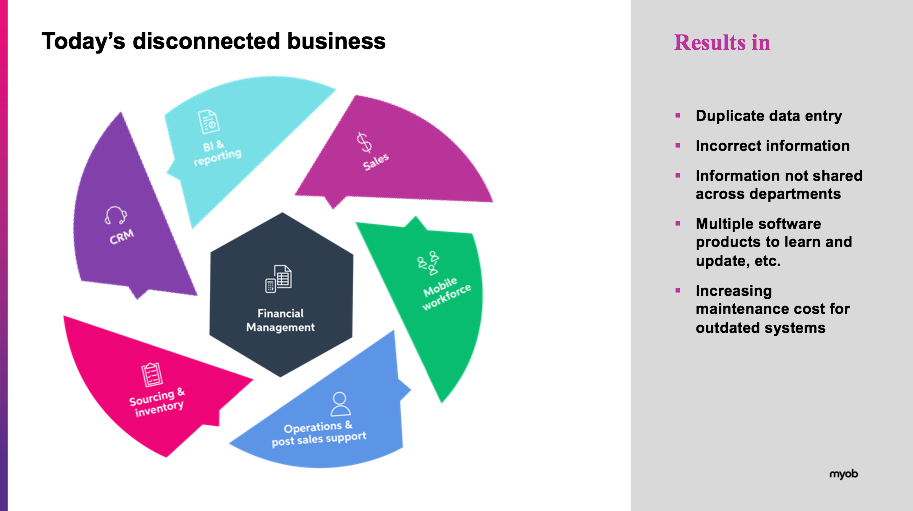
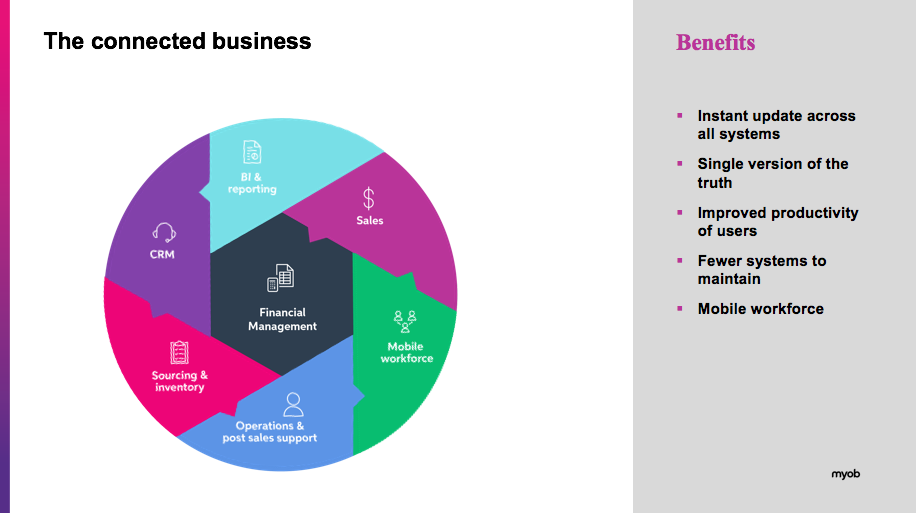
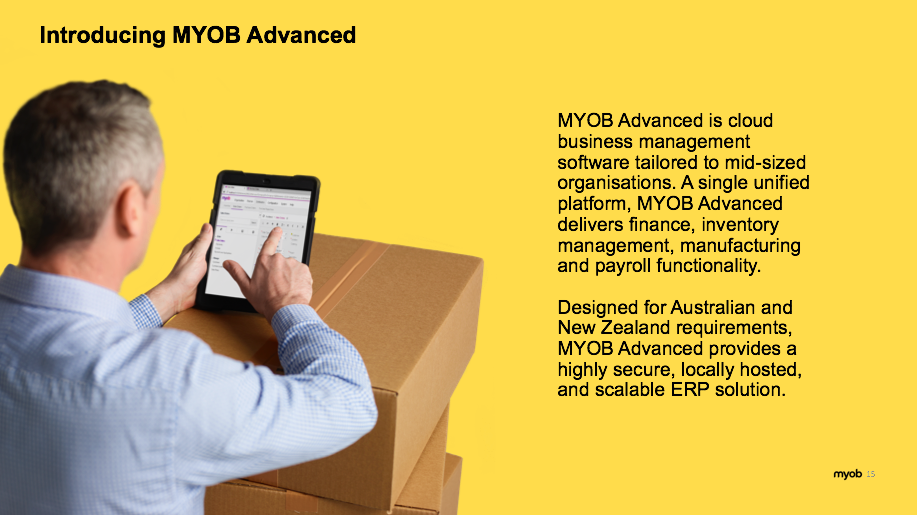
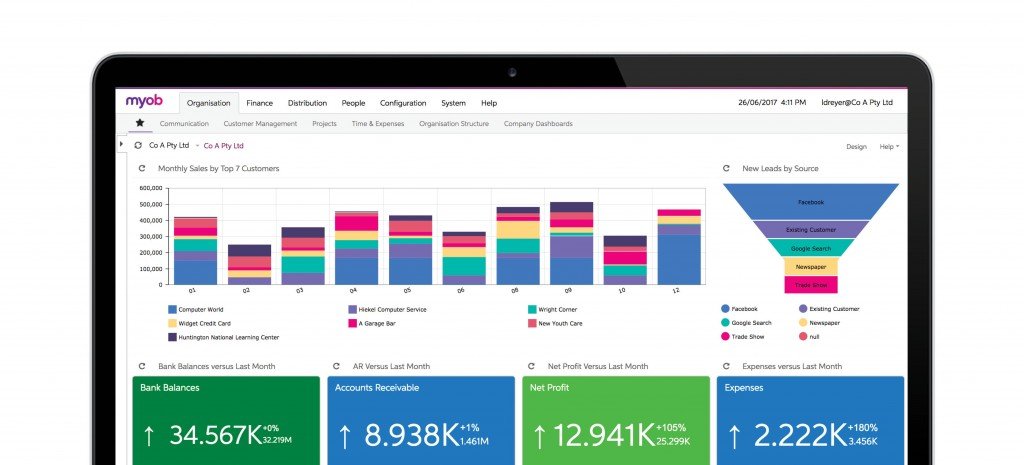
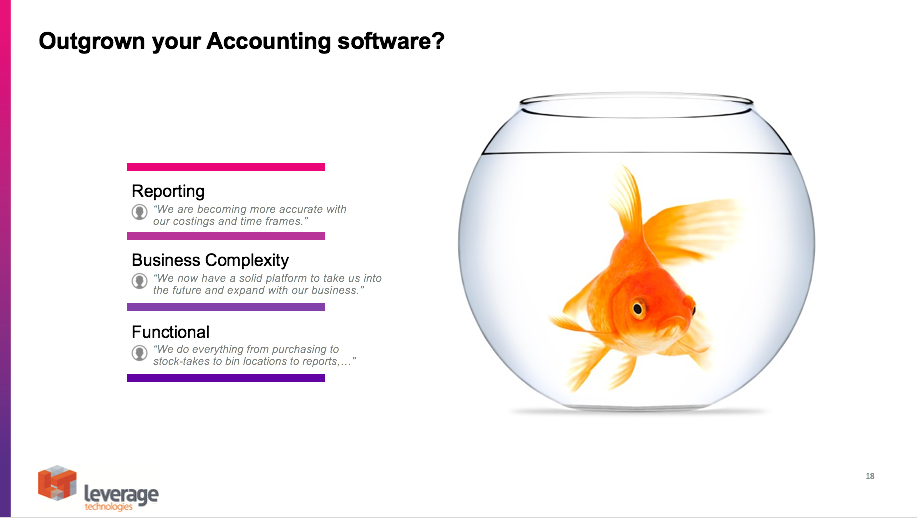
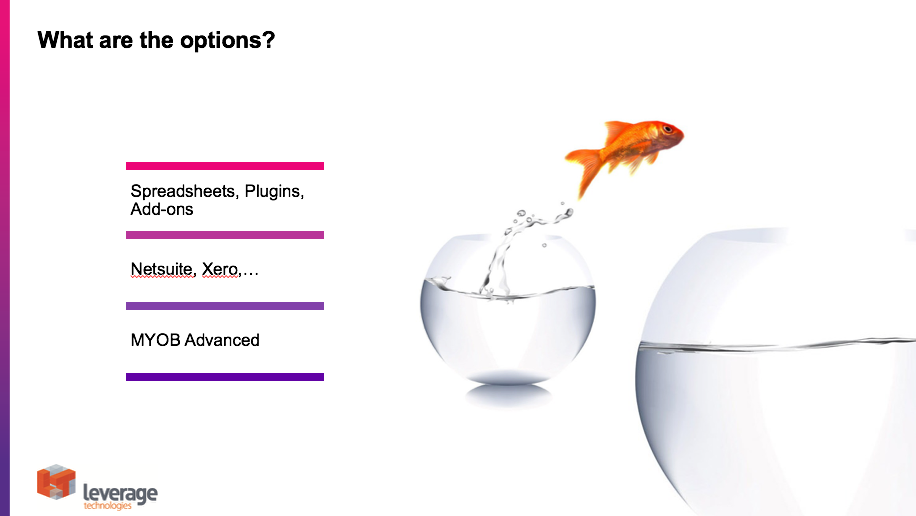





Leave A Comment